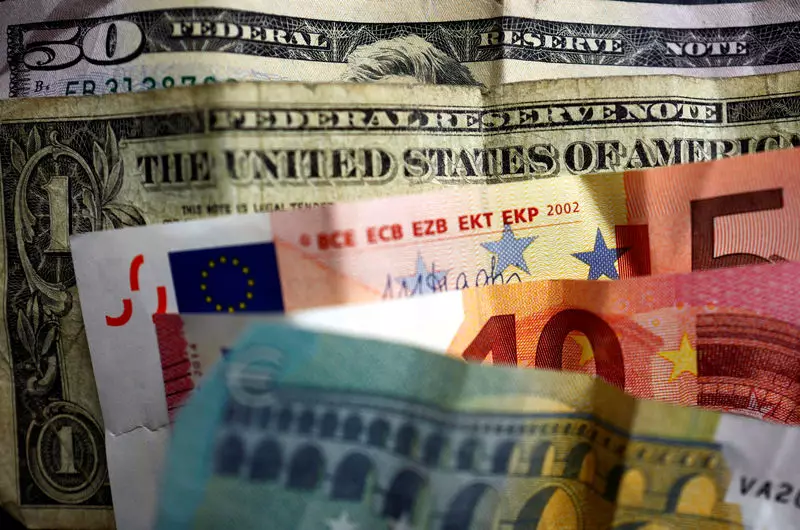In the rapidly evolving landscape of global finance, the value of currencies often reflects intricate interplays of geopolitical tensions and economic policies. In recent weeks, the U.S. dollar has demonstrated resilience amid fluctuating geopolitical tensions, especially concerning Eastern Europe. As traders navigate through this volatile environment characterized by strategic military engagements and evolving political landscapes, the U.S. dollar’s performance continues to garner attention, particularly in contrast to the euro.
On Thursday morning, the U.S. dollar showed a slight increase against its counterparts, continuing to consolidate following a turbulent period. The Dollar Index stood at 106.690, representing a modest 0.1% rise as it sought to maintain its foothold close to recent highs not seen in over a year. A key driver in the dollar’s robustness has been the intricate relationship between the U.S. and Russia, particularly regarding Ukraine’s military actions with Western-supplied armaments.
Additionally, the political climate following Donald Trump’s presidential election victory has led traders to anticipate significant fiscal policies, including heightened spending and potential tariffs. Such policies carry implications for inflation and could inadvertently affect the Federal Reserve’s approach to interest rates. Analysts have noted that the market sentiment has shifted, with only a minimal easing in interest rates expected by December, highlighting a collective backing for the dollar.
As investors look ahead to jobless claims data and upcoming statements from Federal Reserve officials, economic indicators are bound to influence market perceptions. These discussions will play a pivotal role in shaping investor expectations and consequently impact currency valuations. The relative stability of the U.S. economy, amidst the backdrop of international unrest, provides a layer of confidence that investors seem to prefer over European alternatives.
Furthermore, as global markets brace for fluctuating economic narratives, the U.S. dollar often shines as a safe haven, driving demand even in times of uncertainty. This intrinsic quality makes the dollar particularly appealing in light of rising tensions between Russia and the West.
In stark contrast, the euro has shown notable weaknesses, primarily due to the ongoing conflict in Ukraine, which has culminated in geopolitical decisions that have palpable ramifications on the European economy. As of the latest reports, the EUR/USD currency pair has dropped to roughly 1.0516, marking a 0.3% decrease. The euro’s vulnerability seems to stem from a trifecta of challenges: escalating military confrontations, an anemic economic climate, and the looming specter of a trade war ignited by U.S. policy shifts under Trump’s leadership.
ING analysts highlighted that the euro’s current position is significantly impacted by the political and military engagement in Ukraine. As the Biden administration ramps up support for Ukraine, there is a palpable concern about an ensuing aggressive response from the Russian side, further straining the Eurozone’s economic stability.
The U.K. pound also recorded a decline against the dollar, falling by 0.2% to 1.2630, attributing its struggles to economic data reflecting higher-than-expected national borrowing. The public sector’s net borrowing for October reached £17.4 billion—a significant figure that is the second-largest since the records began in 1993. This situation indicates potential fiscal strain as the country navigates its economic landscape under the pressures of ongoing global uncertainty.
In the broader context of currency valuation and market predictions, these economic indicators serve as critical touchpoints for assessing the performance of not only the pound but also the overarching dynamics in the European currency markets.
Across the Pacific, the Japanese yen also experienced shifts, following remarks from Bank of Japan Governor Kazuo Ueda regarding the consideration of foreign exchange-rate fluctuations in policy formulation. Such commentary signals that central banks are becoming increasingly vigilant regarding external economic influences, which could dramatically affect currency strategies moving forward.
The global currency market remains in a state of flux, with the U.S. dollar standing firm amidst geopolitical challenges while the euro and pound struggle to maintain their footing. Investors’ vigilance in monitoring both economic indicators and political developments will be crucial as they endeavor to navigate this ever-evolving financial landscape. The interplay between currency strength, economic data, and geopolitical stability will undoubtedly define trading strategies as we approach the year’s end.

